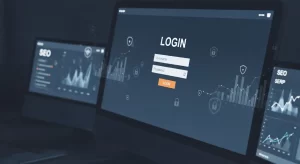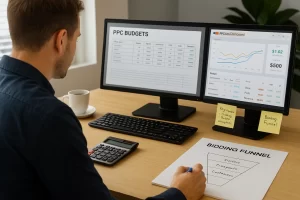Table of Contents
ToggleThe sudden drop in website traffic can be hurtful as well as quite unaccountable. A number of website owners question whether it is a problem with their content that causes the decrease, or if there is some technical outage that is responsible. The good news, however, is that Google Search Console provides certain features that enable you to see the problem and how to fix it nicely.
If you make a habit of monitoring your website frequently using Search Console, you can prevent the indexing problems from affecting your positions and keep your content searchable and accessible.
Start With the Basics: What Changed and When
According to the many recommendations that are being made, it is considered important to have a look at the intermission between the performance of tasks in a manner that should be assessed.
Using the Google Search Console Performance report, one can see the data on clicks, impressions, and average position per date, and even determine the exact time when both line chart trends fell.
- Consider comparing different dates to hunt for any patterns.
- See if the decrease of interest is steep or progressive – this tells you whether it could be a late summer autumn drop or there is a technical issue.
- Identity, which pages incurred the biggest loss in traffic — there are instances where only one section is impacted, for example.
Knowing this chronology is very important in identifying trends and changes along the timeline, which in turn helps to understand how to fix page indexing issues correctly later on.
How to Identify Indexing and Crawling Issues
In case the pages are not appearing in the results of searches, they won’t increase the number of hits they receive. Thus, it is very important to inspect the Coverage section of the Google Search Console. Concentrate on warnings such as “Crawled – currently not indexed” or “Discovered – currently not indexed”.
Recognition of how different web pages may still be improving, and how to fix crawled but not indexed, can protect one from their existing strategies of seeking clicks for weeks.
Some tips and tricks are found below for quick reference:
1. Don’t forget to update your sitemap.
2. Delete any unnecessary “noindex” directives.
3. Optimize page speed to refrain from such delays and improve crawlers’ access and uncover new pages.
These issues are the best sources of information that one would neglect – thanks to this, the probability of a sudden drop in website traffic may be a matter of hours, even where other elements have been well-optimized.
Establishing Connections Before Implementing Solutions
This tendency to fix things at once is very strong, yet what is even stronger is the approach, which calls for taking a step back for a while and collecting all the available information. In most cases, a ranking fall can be credited to several reasons – anything from keyword issues, such as a struggle for dominance among the keywords or trends, the users are interested in.
Therefore, How to analyze drops in traffic entails much more than glancing at a single graph.
Consider these questions:
- Have I removed or reworked any popular content recently?
- When was the last update of Google Search Console?
- Have the PS strategies of the competitors become even more aggressive?
Oftentimes, you would find them present as well, which is why knowing how to fix crawled but not indexed becomes another usual and frequent aspect of SEO initiatives.
Wrapping It Up With a Recovery Plan
AdsRole LLC, assists organizations in their quest to convert search results into workable plans. Equipped with powerful instruments such as Google Search Console, we identify dead spaces and resolve them, as will be shown here in action, how to fix crawled but not indexed, as well as remediation plans developed by securing each case separately.










